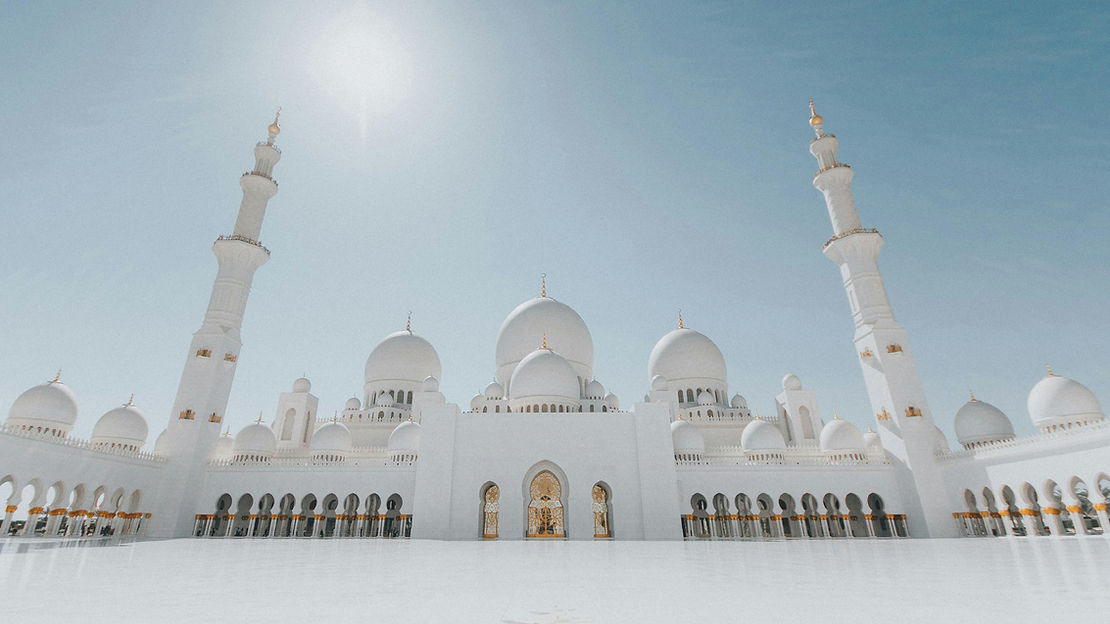
Have you ever walked into a building and immediately felt a sense of awe and wonder? This isn’t just about grandeur or artistic detail; there’s something inherently spiritual about certain spaces that make us feel closer to the divine. Sacred architecture isn’t merely about creating functional spaces for worship; it’s about crafting environments that elevate the spirit, embody religious traditions, and glorify God. In this article, we explore fifteen iconic buildings around the world that achieve just that—each with its own unique story and spiritual significance.
The Concept of Sacred Architecture
Defining Sacred Architecture: More Than Just Aesthetics
Sacred architecture is the art of designing buildings that are not only places of worship but also serve as spiritual landmarks that reflect and uphold the beliefs of their respective faiths. The design of these buildings often incorporates elements that are meant to symbolize eternal truths, facilitate religious ceremonies, and provide a space where the divine can be felt more intensely.
How Architecture Aids in Spiritual Experiences
The layout, structure, and even the ornamentation of sacred buildings are meticulously planned to guide the faithful in their spiritual journeys. High ceilings may represent the heavens, intricate patterns might symbolize the complexity of creation, and strategic lighting could be used to signify divine light breaking through darkness. This careful crafting ensures that the architecture itself plays an active role in the worship experience.
1. St. Peter’s Basilica, Vatican City

Historical Significance and Religious Importance
St. Peter’s Basilica is not only a breathtaking example of Renaissance architecture but also the heart of Catholicism, built over the historical site believed to be the burial place of St. Peter, one of Christ’s Apostles and the first Pope. This site has been a central place of pilgrimage for centuries, drawing millions who wish to connect with the roots of their faith.
Architectural Features That Highlight Divine Glory
The basilica’s grandiose design, highlighted by Michelangelo’s magnificent dome, serves to elevate the minds and hearts of those who enter towards God. The vastness of the nave, the depth of the art, and the detailed craftsmanship all around reflect the glory and majesty of God, making it a place where heaven seems to touch the earth.
2. Sagrada Familia, Barcelona, Spain
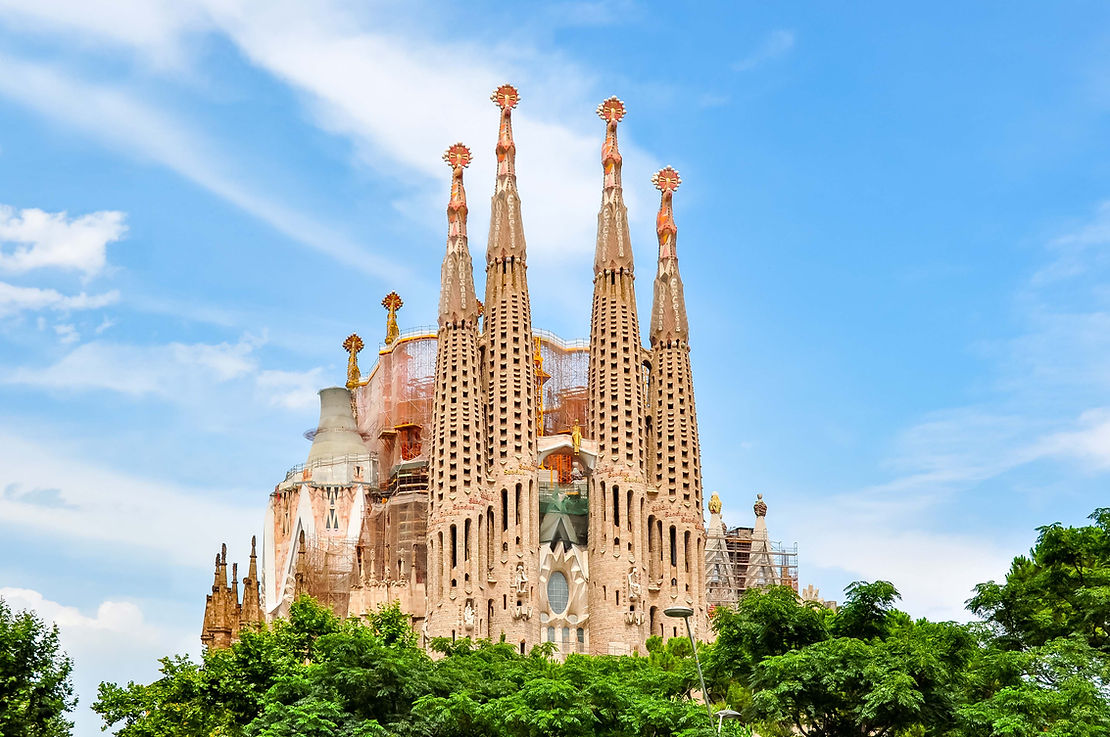
Gaudí’s Masterpiece: A Fusion of Faith and Design
Antoni Gaudí’s unfinished masterpiece, the Sagrada Familia, is a profound expression of Christian symbolism and narrative through architecture. Each element of the church tells a story from the Scriptures, and Gaudí designed it with the intention that the building itself would preach the Gospel.
Unique Architectural Elements Symbolizing Christian Beliefs
From its facades depicting scenes from the life of Jesus to its towers dedicated to biblical figures, the Sagrada Familia is a visual sermon. The interior mimics a forest, with columns branching out like trees, reminding visitors of the beauty and sanctity of God’s creation.
3. Notre-Dame de Paris, France
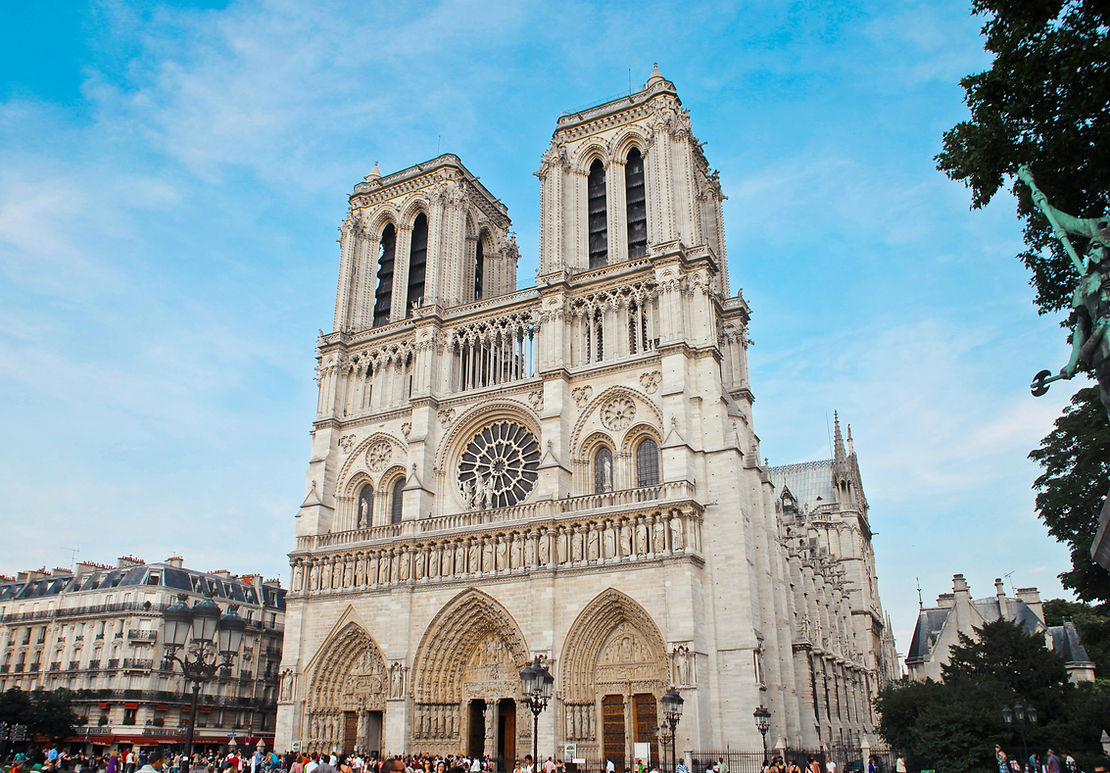
Gothic Architecture as a Medium for Spiritual Storytelling
Notre-Dame de Paris is a masterpiece of Gothic architecture, known for its intricacy and soaring spires. It has stood as a beacon of hope and faith in the heart of Paris for centuries. The stained glass and rose windows not only illuminate the interior with colorful light but also depict biblical stories and saints, educating and inspiring all who gaze upon them.
Restoration Efforts: Preserving Divine Beauty
After the tragic fire in 2019, restoration efforts have been underway to return Notre-Dame to its former glory, symbolizing the resilience of faith and the community’s dedication to preserving its spiritual and cultural heritage.
4. Saint Basil’s Cathedral, Moscow, Russia
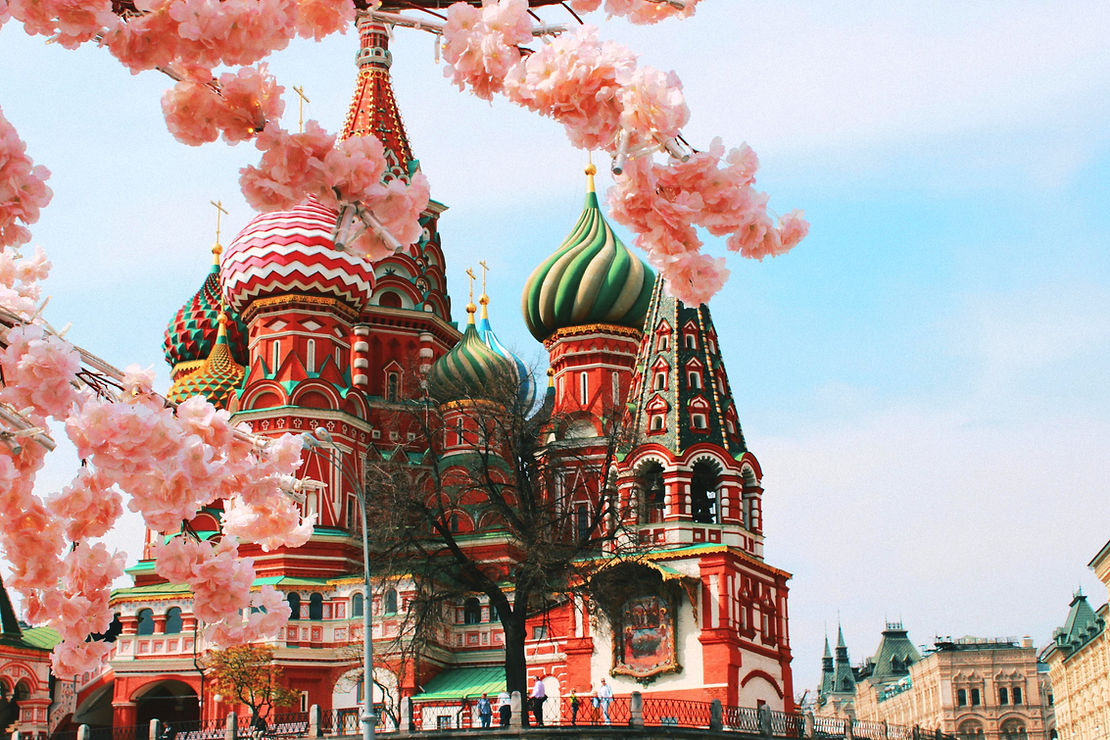
The Iconic Onion Domes: Symbolism in Russian Architecture
Saint Basil’s Cathedral, with its colorful, swirling onion domes, is a landmark of Moscow and a symbol of Russian architectural innovation. Each dome is uniquely patterned and brightly colored, representing the heavenly kingdom in Orthodox Christianity. The building stands at the geometric center of Moscow, suggesting its spiritual centrality to the city and the nation.
Historical and Cultural Significance in Glorifying God
Constructed on the orders of Ivan the Terrible in the 16th century, the cathedral commemorates the capture of Kazan and Astrakhan, and is dedicated to the intercession of the Virgin Mary. Its design defies traditional architectural conventions, instead creating a symbolic expression of the divine mystery.
5. Las Lajas Sanctuary, Colombia
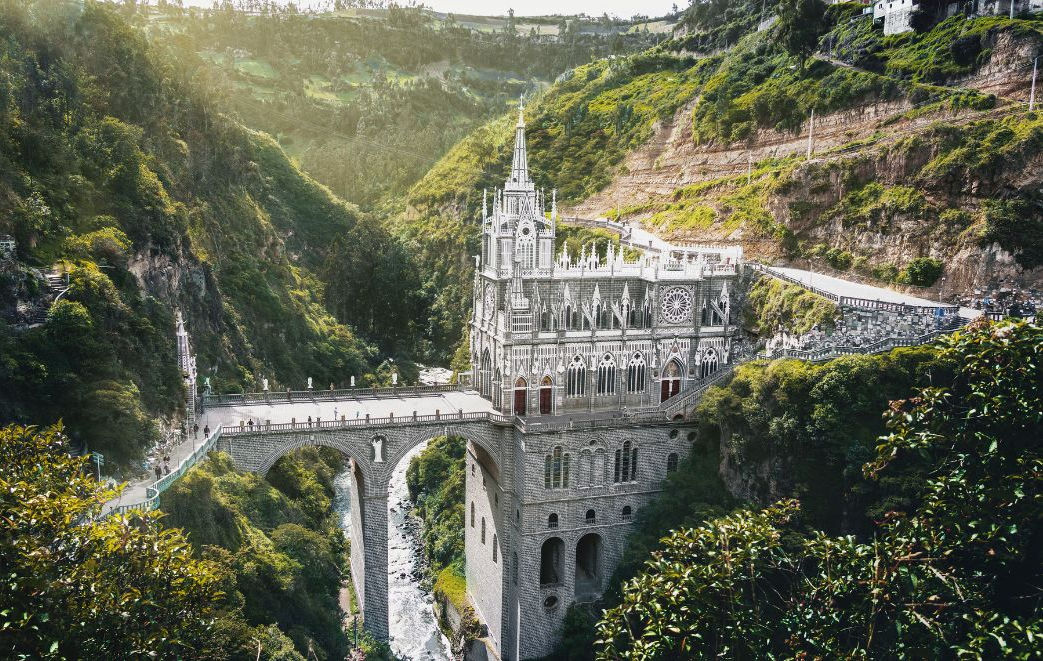
A Marvel of Modern Religious Architecture
Perched inside the canyon of the Guáitara River, the Las Lajas Sanctuary is not just an architectural wonder but also a place of deep spiritual significance. The gothic-style church was built directly into the canyon wall, where an image of the Virgin Mary is said to have miraculously appeared on the rock face.
Built on Miracles: The Story Behind the Sanctuary
The origins of the sanctuary trace back to a miraculous event in the 18th century when a woman and her deaf-mute daughter were caught in a storm and sought refuge between the giant Lajas (stones). According to legend, the daughter spoke for the first time to point out the apparition of the Virgin Mary on the rock, leading to the site’s veneration.
6. Sultan Ahmed Mosque (Blue Mosque), Istanbul, Turkey

The Harmony of Islamic Architecture and Spirituality
The Sultan Ahmed Mosque, commonly known as the Blue Mosque, stands as a masterpiece of Islamic architecture. Built during the rule of Ahmed I, it is known for its six minarets—a distinctive feature that sets it apart from other mosques of its time. The mosque’s design incorporates both Byzantine Christian elements and traditional Islamic architecture, symbolizing a cultural bridge between two eras.
Artistic Features: Calligraphy and Tile Work Glorifying God
Inside, the mosque is adorned with over 20,000 handmade ceramic tiles in various tulip designs, and more than 200 stained glass windows illuminate its vast prayer hall. The use of blue paint in the interior gives it the name ‘Blue Mosque’. The intricate calligraphy on the walls consists of verses from the Quran, designed to remind the faithful of the divine word.
7. Temple of Heaven, Beijing, China
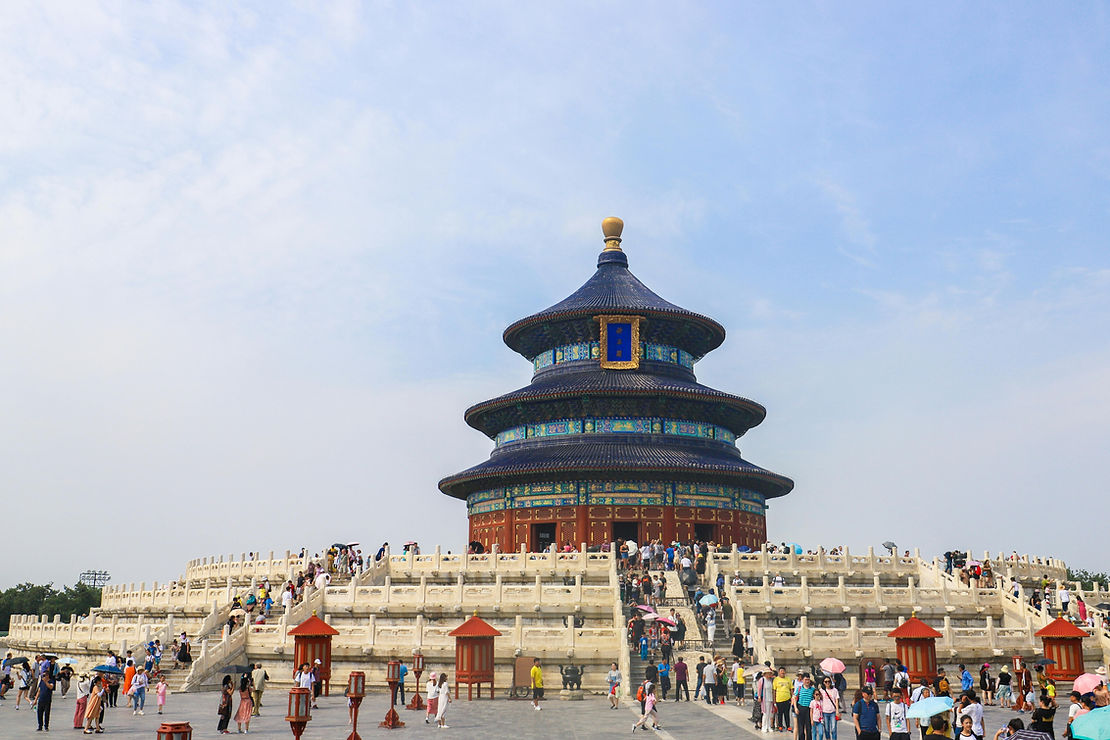
Architectural Symmetry Representing Heaven and Earth
The Temple of Heaven in Beijing is more than just a religious building; it is a symbol of the relationship between heaven and earth. The complex is arranged in concentric circles, representing the heavens, and was used by emperors of the Ming and Qing dynasties to offer sacrifices and pray for good harvests.
The Role of Religion in Ancient Chinese Architecture
The architecture of the Temple of Heaven is highly symbolic, featuring elements like the round altar encircled by square land, illustrating the ancient Chinese belief of ’round heaven and square earth’. This structure was built according to strict philosophical requirements and is a testament to the spiritual and cosmic significance of numbers in Chinese culture.
8. Sheikh Zayed Grand Mosque, Abu Dhabi, UAE

A Modern Marvel of Islamic Architecture
The Sheikh Zayed Grand Mosque in Abu Dhabi stands as one of the most impressive contemporary mosques in the world. Completed in 2007, it was commissioned by the late president of the UAE, Sheikh Zayed bin Sultan Al Nahyan, whose resting place is located on the grounds. This mosque serves not only as a place of worship but also as a symbol of diversity and unity in the UAE.
Elegant Fusion of Global Architectural Styles
The mosque can accommodate over 40,000 worshippers, making it one of the largest mosques in the world. It features 82 domes of Moroccan design and an impressive main dome with a diameter of 32.8 meters. The mosque’s architecture incorporates materials and craftsmanship from many countries including Italy, Germany, Morocco, India, Turkey, Iran, China, and the UAE, creating a global mosaic of Islamic art. The interior is adorned with one of the largest chandeliers in the world and the world’s largest hand-knotted carpet.
9. Westminster Abbey, London, UK

A Site of Royal Religious Ceremonies and Spiritual Significance
Westminster Abbey is not just a place of worship but also a historic site that has witnessed numerous royal ceremonies, including coronations and weddings. Its Gothic architecture and centuries of British history make it a spiritual home for the nation.
Gothic Architecture and Its Role in Divine Glory
The Abbey’s towering spires and beautiful stained glass windows enhance the spiritual atmosphere, directing all thoughts upwards towards the divine. The intricate stonework and majestic altars inside the Abbey reflect its status as a place of solemn religious significance and national pride.
10. Wat Rong Khun (White Temple), Thailand
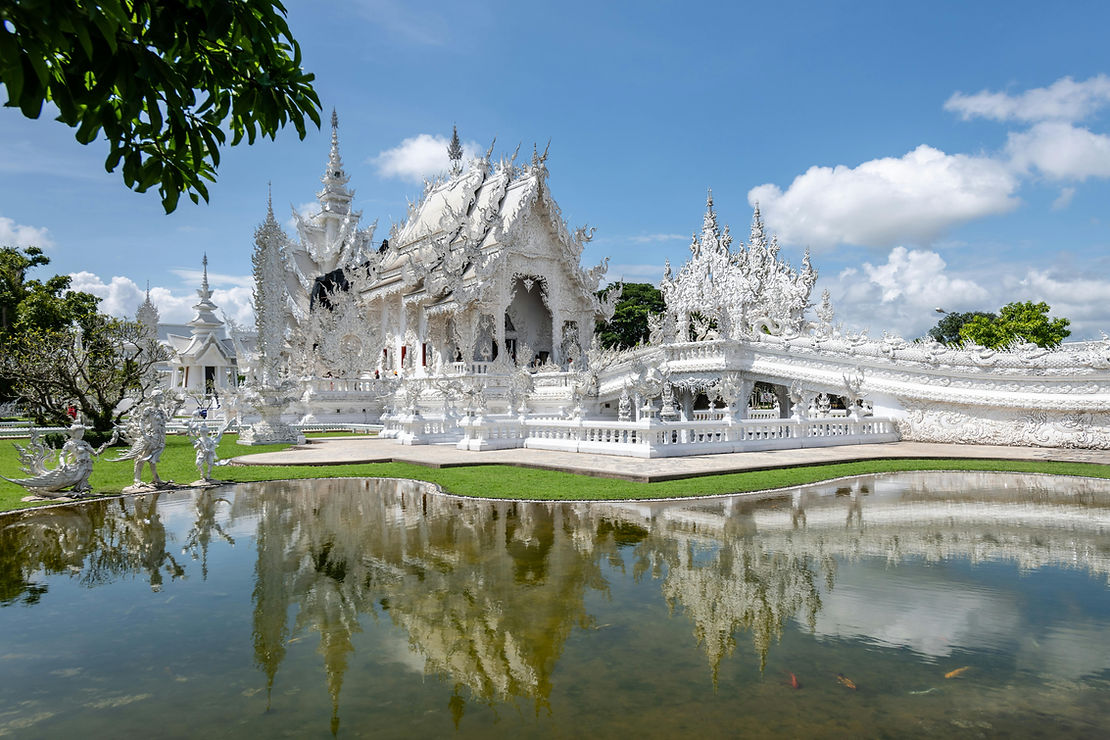
Unconventional Architecture in Modern Religious Buildings
Wat Rong Khun, more commonly known as the White Temple, is a unique contemporary Buddhist temple in Thailand. Designed by artist Chalermchai Kositpipat, the temple stands out due to its gleaming white color and use of pieces of glass in the plaster, sparkling in the sun.
Art and Religion: An Artist’s Vision of Heaven on Earth
The White Temple is a representation of Buddhist teachings through modern art forms. The complex includes several buildings that are rich in symbolism; they are designed to denote different states of mind, the overcoming of desires, and the sublime nature of Buddha’s teachings.
11. Jubilee Synagogue, Prague, Czech Republic
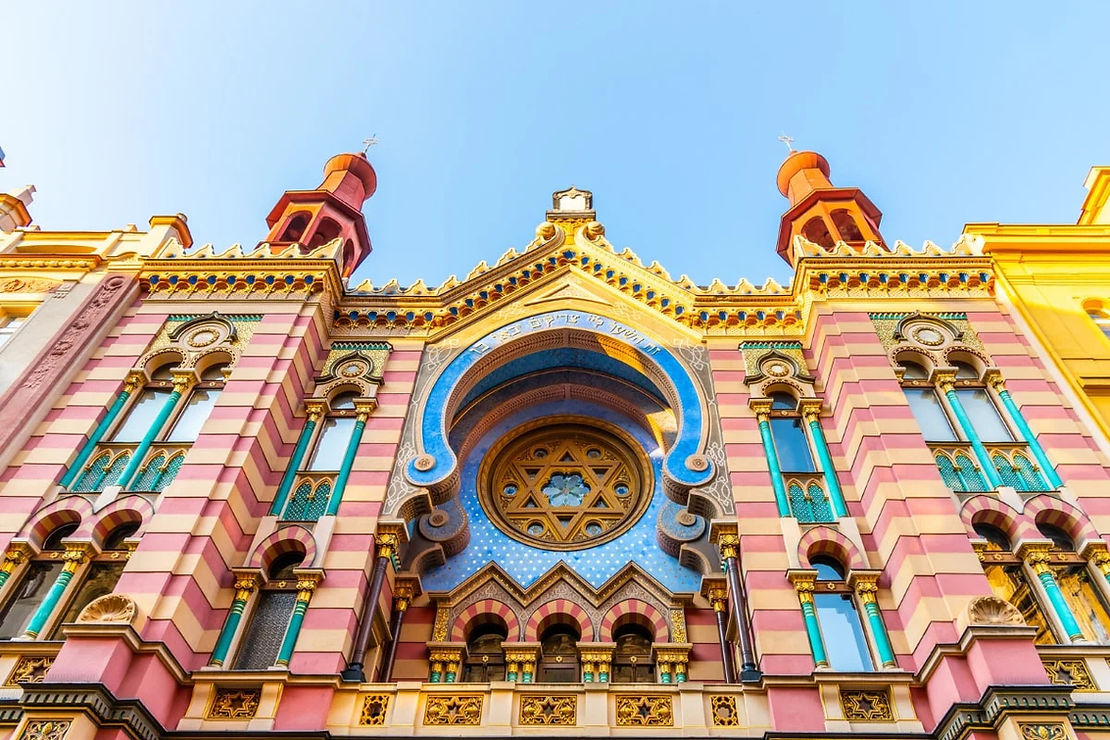
A Jewel of Art Nouveau and Moorish Design
The Jubilee Synagogue, also known as the Jerusalem Synagogue for its location on Jerusalem Street, is Prague’s largest synagogue. Completed in 1906 to celebrate the 50th anniversary of Emperor Franz Joseph I of Austria, it showcases an exquisite blend of Art Nouveau and Moorish architectural styles, making it a unique spiritual and cultural landmark in the city.
Symbolism and Beauty in Architectural Details
The facade is adorned with richly colored bricks and ceramic tiles, and the interior is equally vibrant with elaborate Islamic-style arches and a stunning array of painted decorations. These elements combine to create a space that is not only a place of worship but also a testament to the artistic and spiritual heritage of the Jewish community in Prague.
12. Cathedral of Santa Maria del Fiore, Florence, Italy
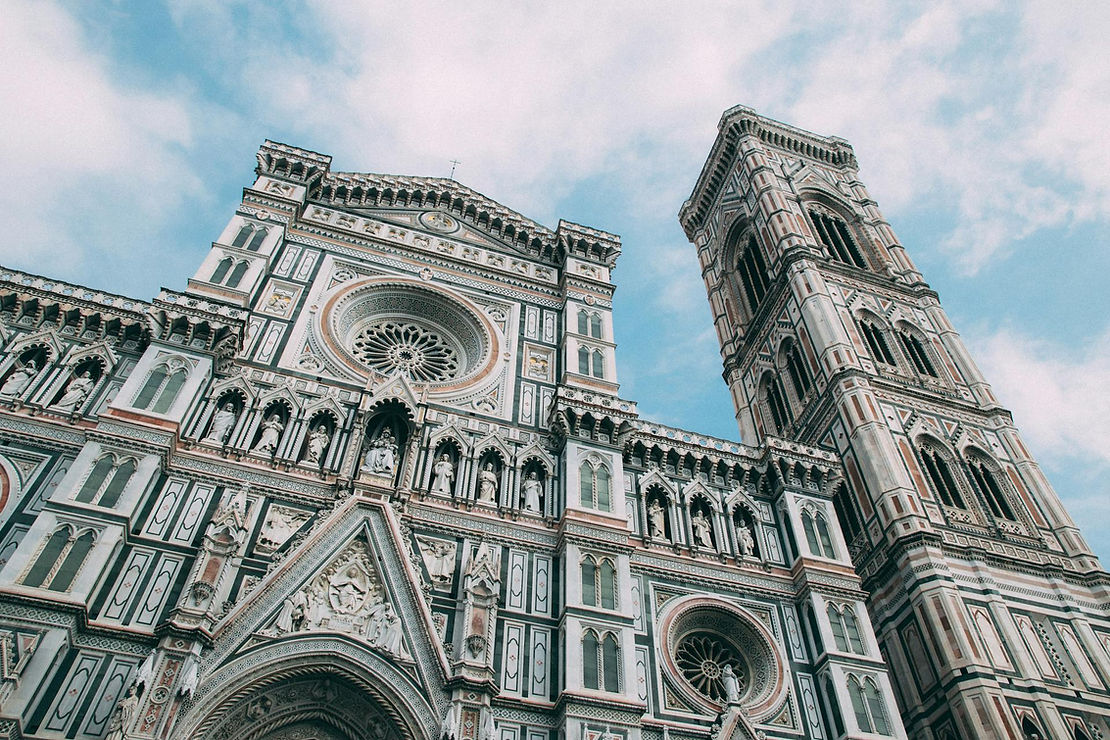
A Masterpiece of Italian Gothic and Renaissance Architecture
The Cathedral of Santa Maria del Fiore, commonly known as the Duomo of Florence, is one of the most iconic landmarks in Italy. Started in the late 13th century, it was not completed until the 15th century with the addition of Filippo Brunelleschi’s magnificent dome, an engineering marvel that remains the largest brick dome ever constructed (Pictured Below).
Artistic and Engineering Brilliance Converging
The cathedral is renowned for its vast scale, the beauty of its multicolored marble panels in shades of green, pink, and white, and its breathtaking dome, which is not only a feat of engineering but also a symbol of the Renaissance spirit. The intricate exterior is complemented by a relatively sparse interior, focusing attention on the dome’s impressive fresco of “The Last Judgment” by Giorgio Vasari. This structure not only serves as a religious center but also stands as a testament to human creativity and dedication, embodying the spirit of Florence as a key city in the cultural history of Europe.

13. Golden Temple, Amritsar, India
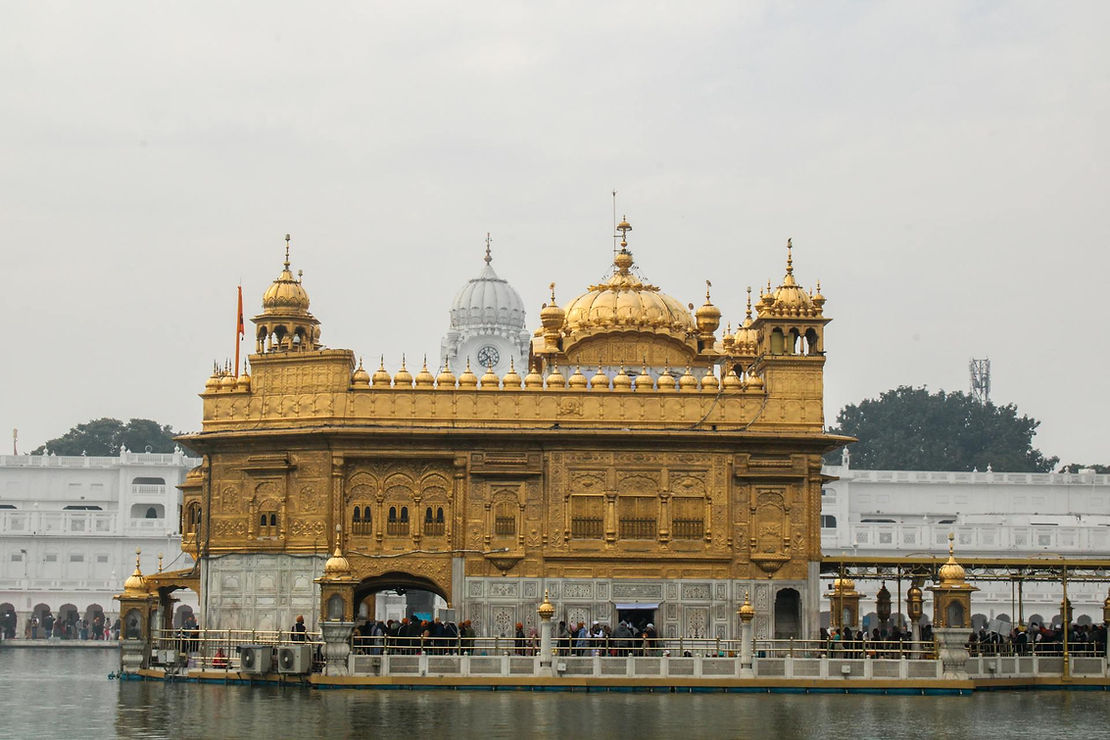
A Symbol of Holiness and Equality
The Golden Temple, also known as Harmandir Sahib, is the holiest shrine in Sikhism. Located in Amritsar, Punjab, it was founded by the fourth Sikh Guru, Guru Ram Das Ji, and completed by his successor Guru Arjan Dev Ji in 1604. This temple is not only a place of great spiritual importance for Sikhs but also a symbol of human brotherhood and equality.
Architectural Splendor and Spiritual Serenity
The Golden Temple is famous for its stunning gold-plated building, surrounded by a large, serene body of water, known as the Amrit Sarovar, from which the city of Amritsar takes its name. The temple’s architecture embodies both Hindu and Islamic architectural influences, symbolizing the unity of various religious philosophies. Visitors are struck by the temple’s peaceful atmosphere and the gleaming reflection it casts in the surrounding waters at night. The practice of Langar, a free community kitchen that serves meals to thousands of people daily regardless of religion or background, exemplifies the Sikh principles of service and community.
14. Great Mosque of Mecca, Saudi Arabia

The Most Sacred Site in Islam
The Great Mosque of Mecca, also known as Masjid al-Haram, is the largest mosque in the world and surrounds Islam’s holiest place, the Kaaba. Located in the heart of Mecca, Saudi Arabia, it is the focal point of the Islamic pilgrimage—Hajj—and the destination of the smaller pilgrimage, Umrah, drawing millions of Muslims from around the world annually.
A Confluence of Islamic History and Modernity
The mosque has undergone numerous expansions throughout its history to accommodate the increasing number of pilgrims. Its massive compound includes the outdoor and indoor praying spaces, capable of accommodating more than a million worshippers during peak times. The Kaaba, a cuboid structure draped in a silk and gold curtain located at the center of the mosque, is the most sacred spot in Islam. Pilgrims perform the ritual of Tawaf by circling the Kaaba seven times in a counterclockwise direction. The mosque’s ongoing expansions have incorporated cutting-edge technology while respecting the traditional Islamic architecture, ensuring it remains a place where past traditions meet modern faith practices.
15. The Sistine Chapel Ceiling, Vatican City
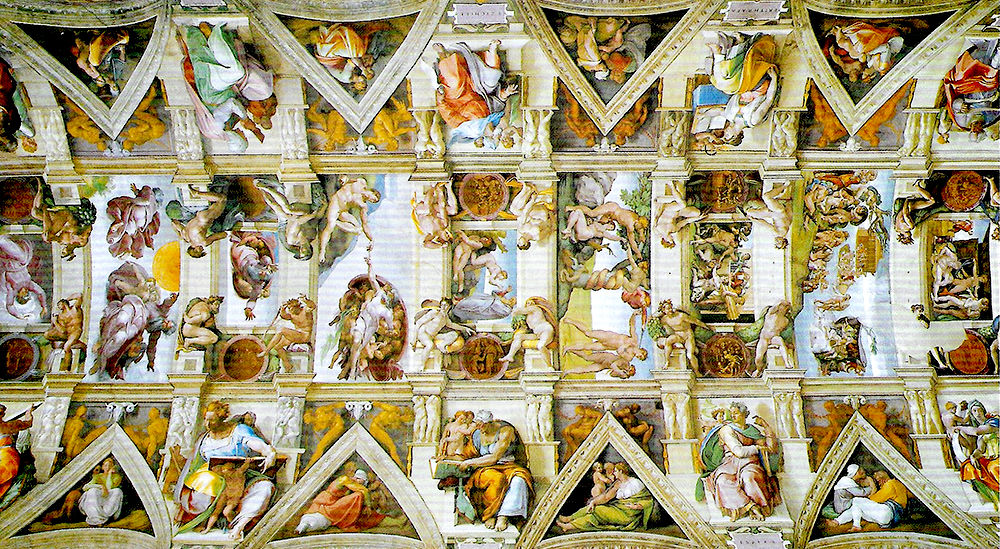
A Marvel of Renaissance Art in a Sacred Space
The Sistine Chapel, located in the Vatican City, is famous for its architecture and more so for its exquisite ceiling frescoes painted by Michelangelo between 1508 and 1512. This masterpiece is a cornerstone of High Renaissance art that transforms a simple chapel ceiling into a narrative that spans the biblical story of creation, the downfall of humanity, and the promise of salvation.
Artistic Brilliance Conveying Divine Messages
Michelangelo’s frescoes on the Sistine Chapel ceiling cover over 500 square meters and include iconic scenes such as “The Creation of Adam,” where God breathes life into Adam, an image so powerful that it has become emblematic of Western art (Pictured below). The complex imagery and the intricate interaction between human figures and divine presence not only demonstrate Michelangelo’s unparalleled skill but also invite viewers to contemplate profound spiritual themes. The ceiling’s impact on both art and the observers’ spirituality is profound, making it a seminal work for both its artistic innovation and its capability to evoke religious reflection and awe.
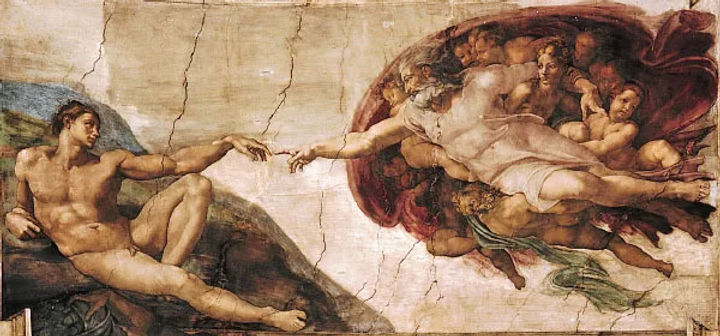
Conclusion
The architecture of sacred spaces not only provides a place for worship and community but also stands as a profound expression of human creativity and spiritual aspiration. These buildings, from the sands of Abu Dhabi’s deserts to the landscapes of Italy, not only glorify God but also foster a deep sense of community and continuity among their visitors. They remind us of the shared human quest for transcendence and the diverse paths we travel to seek the divine.
This exploration of 15 buildings that glorify God has hopefully provided you with a deeper appreciation of how architecture can connect us more closely to the spiritual and the sublime. Whether through towering spires, reflective surfaces, or sacred geometries, these structures continue to uplift and inspire all who encounter them.

Recent Posts
15 Floor Plan Graphic Styles That Will Elevate Your Presentation Game
The Role of Shadows in Architectural Storytelling
When Furniture Becomes Architecture: Blurring the Line